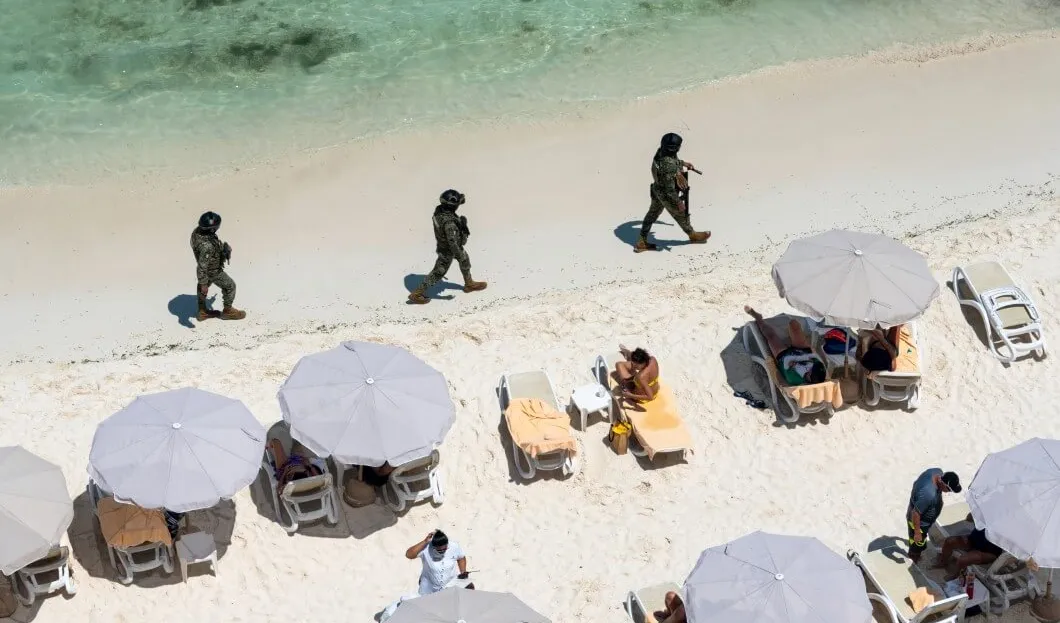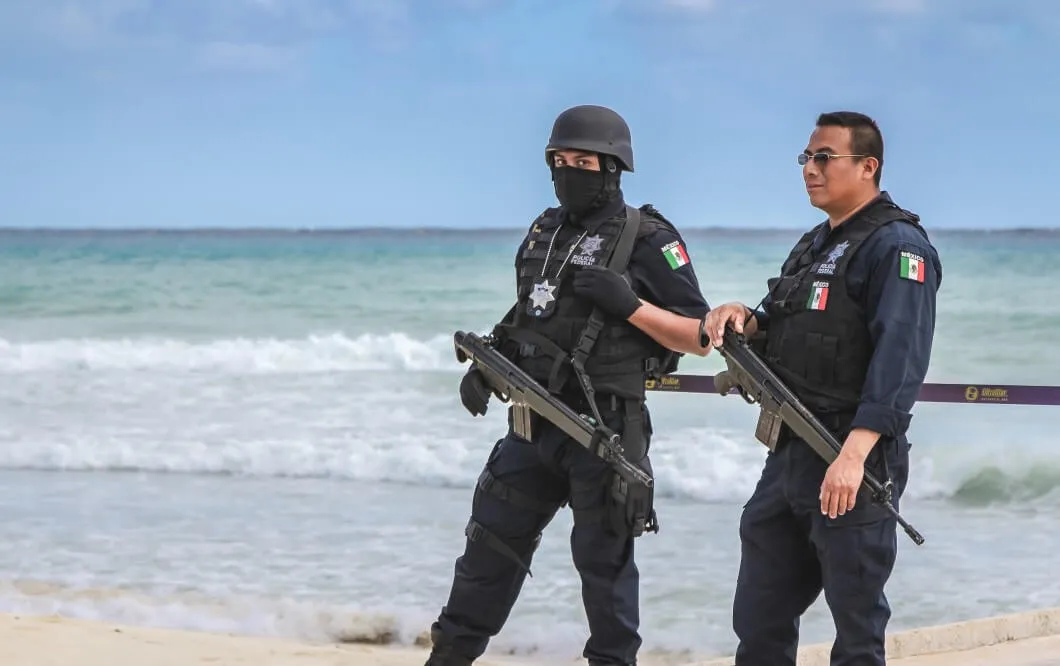
Cancún, the Mexican paradise was once considered a relatively safe area. Then, ten years ago, territorial fights began between hostile drug gangs. However, they took place in the nightclubs or the working-class neighborhoods on the outskirts of Cancún. The victims were mostly young Mexicans. Now, robberies and shootings are also occurring in broad daylight in luxury hotels, on the beach and in bars and discos frequented by foreigners.
The security situation is bad news for the tourism sector, which has already been hard hit by Corona. Even more disturbing for experts, however, are signs that the international mafia has apparently set its sights on Mexico's Caribbean coast as an operational platform.
The latest indication of this was a shooting a few days ago in a luxury hotel on the Riviera Maya. Two Canadians died and a woman was injured. The shooting occurred in the middle of the day at the hotel's pool and caused panic. The two dead, as it quickly turned out, were internationally wanted criminals, involved in drug and arms trafficking and money laundering.
According to media reports, the two were working on behalf of Vietnamese mafia boss Cong Dinh, who has his main base of operations in the United States and Canada. It looked like a settling of scores in the milieu: The killer had checked in as a guest under a false identity and then fled into the jungle surrounding the hotel.
"The Caribbean has become an attractive destination for international criminals," writes mafia expert Eduardo Guerrero in the newspaper El Financiero. "The combination of beaches, bars and lax immigration controls has contributed to this." Falko Ernst of the International Crisis Group agrees: "Cancún and the Riviera Maya are a magnet for criminal interests because there's a lot of money circulating there. The Caribbean is also a major platform for international drug trafficking."
And it's also a lucrative outlet for the cartels: of the 45 million tourists who visited Mexico annually before the pandemic, 40 percent ended up in Cancún. The beaches are especially popular with young party tourists who consume a lot of alcohol and drugs.
The best-known international mafia boss arrested in the Mexican paradise last year was the Romanian Florian Tudor. His gang specialized in credit card cloning. "But there are other gangs from Eastern Europe and Russia," says Guerrero, who worked for Mexican intelligence. Chinese triads are also involved in product piracy in Mexico, smuggling timber and exotic animals, mining products and precursor chemical drugs.

So far, much of this criminal business still runs parallel to the Mexican groups' drug business and protection racket. But Eduardo Guerrero fears that "international cells could offer their services and contacts to Mexican criminals, especially in money laundering, drug trafficking, arms trafficking, and human trafficking."
The Mexican mafia has become increasingly fragmented in recent years. "The major drug cartels, such as the Sinaloa Cartel and Jalisco Nueva Generacion, operate in the region. As well as numerous local criminals," says Falko Ernst of Crisis Group Mexico.
This somewhat confusing mix is increasingly leading to conflicts in the underworld. Which then culminated, for example, in November in a shootout at a hotel in Puerto Morelos. In the small, tranquil fishing village, guests had apparently asked hotel employees for tips on how to buy cocaine. They made a few calls, but according to investigators, they were poorly coordinated: As a result, two different cartels arrived at the hotel at the same time, leading to the shootout in which two dealers died.
According to Ernst, the fact that the violence escalated also has to do with a "lack of strategy on the part of the government." True, President Andres Manuel López Obrador sent a contingent of National Guardsmen to the region before Christmas. "But there is no coherent strategy to dry up the swamp between the state and criminals and to fight corruption," Ernst says.
Guerrero holds out hope that massive pressure from the tourism industry will force politicians to act. Tourism accounts for nearly nine percent of the gross domestic product. There are positive examples of this in the industrial city of Monterrey, for example, where concerted action by politicians, business bosses and several international intelligence agencies has yielded success in pushing back the mafia.
There are also negative examples, such as Acapulco, which has lost its image as a tourist stronghold. In general, the country is currently in reverse gear in terms of public security. More and more new popular tourist destinations are getting caught up in the mafia's wake.










